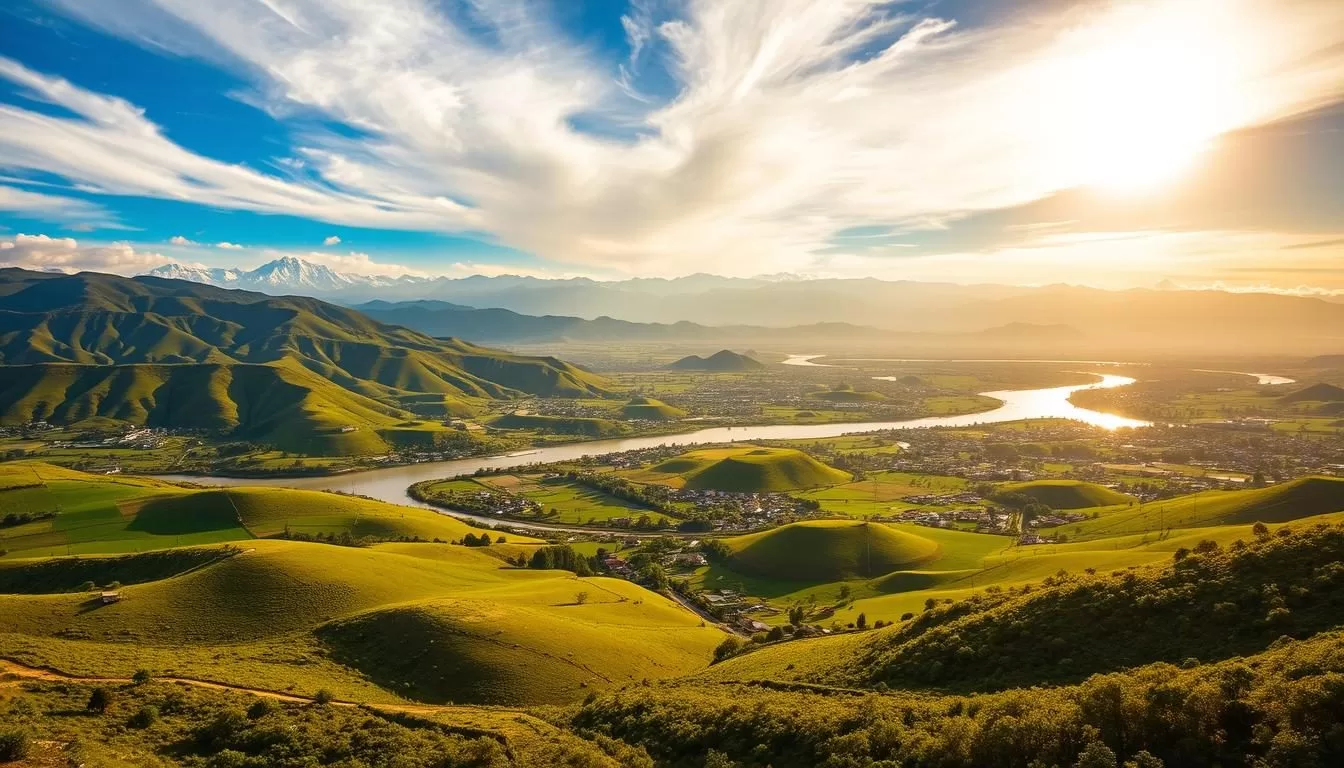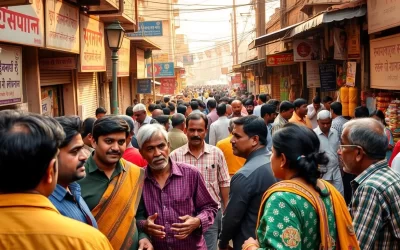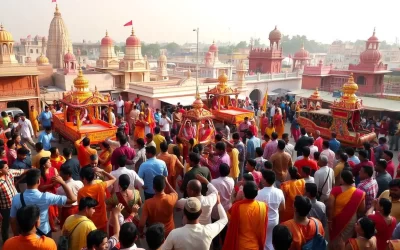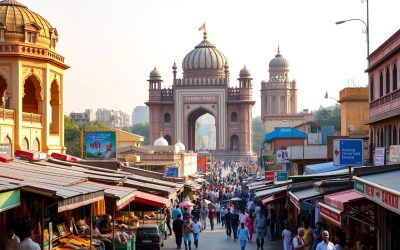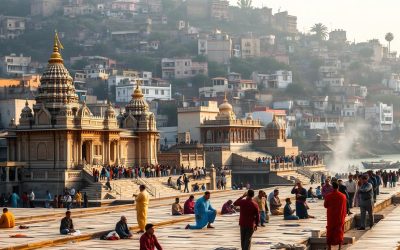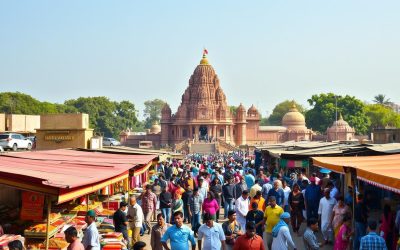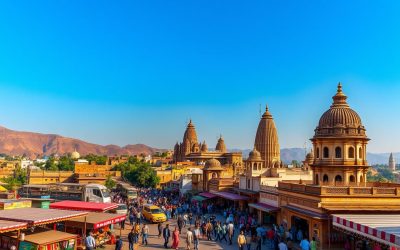When traveling to Uttar Pradesh, understanding the local climate is crucial for a comfortable journey. The state’s diverse weather patterns can significantly impact your travel experience.
You need to know the best time to visit this historically rich region, home to iconic attractions like the Taj Mahal and sacred cities like Varanasi. Dramatic seasonal variations can make or break your trip. By understanding the climate patterns, you can pack accordingly and plan activities that align with the weather.
This guide will help you navigate the optimal time to travel to Uttar Pradesh, ensuring a pleasant and memorable experience.
Understanding Uttar Pradesh’s Climate Patterns
Located in the heart of northern India, Uttar Pradesh has a unique climate profile. The state’s geography plays a significant role in shaping its climate.
Geographic Location and Climate Classification
Uttar Pradesh falls within North India’s climate zone, but its central location in the Gangetic plains gives it a distinct microclimate. The state’s inland position, away from the moderating influences of the coast, results in more extreme temperature variations compared to southern Indian states.
The climate in Uttar Pradesh is characterized by hot summers, moderate rainfall during the monsoon, and cool, dry winters, typical of the north Indian plains. This variation in climate is due to its geographical location.
| Season | Characteristics | Time of Year |
|---|---|---|
| Summer | Hot and dry | March to June |
| Monsoon | Moderate rainfall | July to September |
| Winter | Cool and dry | October to February |
How Uttar Pradesh Fits into India’s Climate Regions
India’s climate is divided into three distinct seasons: winter, summer, and the monsoon. Uttar Pradesh follows this broader north Indian climate system while having regional variations within its different districts.
Understanding how Uttar Pradesh fits into India’s overall climate regions helps travelers compare conditions with other popular Indian destinations they might be visiting on the same trip. The state’s climate is influenced by its location in the north of the country.
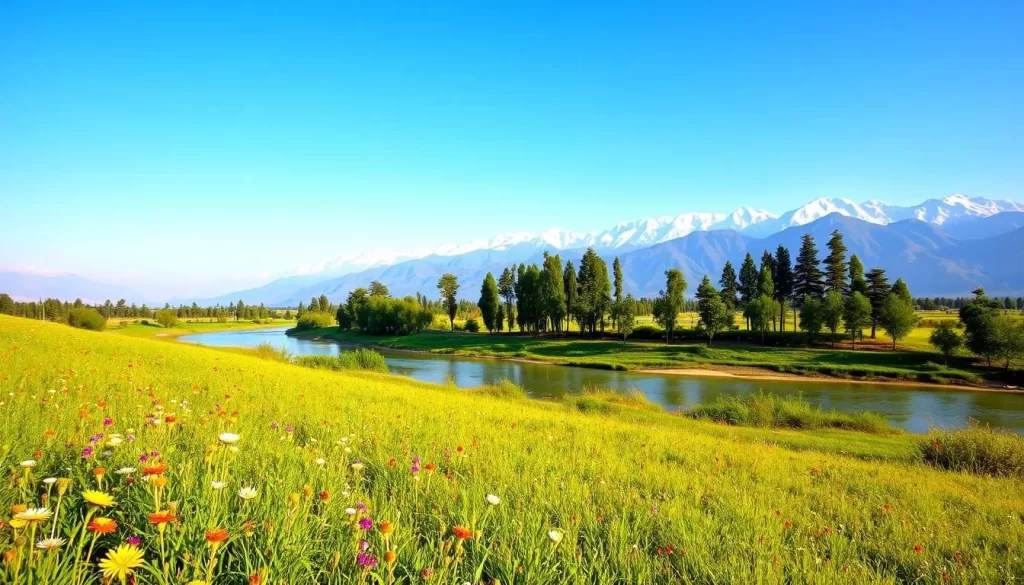
The Three Distinct Seasons of Uttar Pradesh
As you explore Uttar Pradesh, you’ll notice the state’s climate is divided into three clear seasons, each with its own charm. Understanding these seasons is key to planning your trip and making the most of your time in this diverse Indian state.
Summer Season: March to June
Summer in Uttar Pradesh is characterized by rising temperatures and dry conditions. Days can be extremely hot, with temperatures often soaring above 40°C (104°F). This season is challenging for outdoor activities, but it’s a good time to explore indoor attractions like museums and historical sites that are air-conditioned.
Monsoon Season: July to September
The monsoon brings much-needed relief from the summer heat, with significant rainfall transforming the landscape. While the rain can make some roads impassable, it’s a great time to enjoy the lush green scenery and the state’s natural beauty. However, be prepared for occasional heavy downpours.
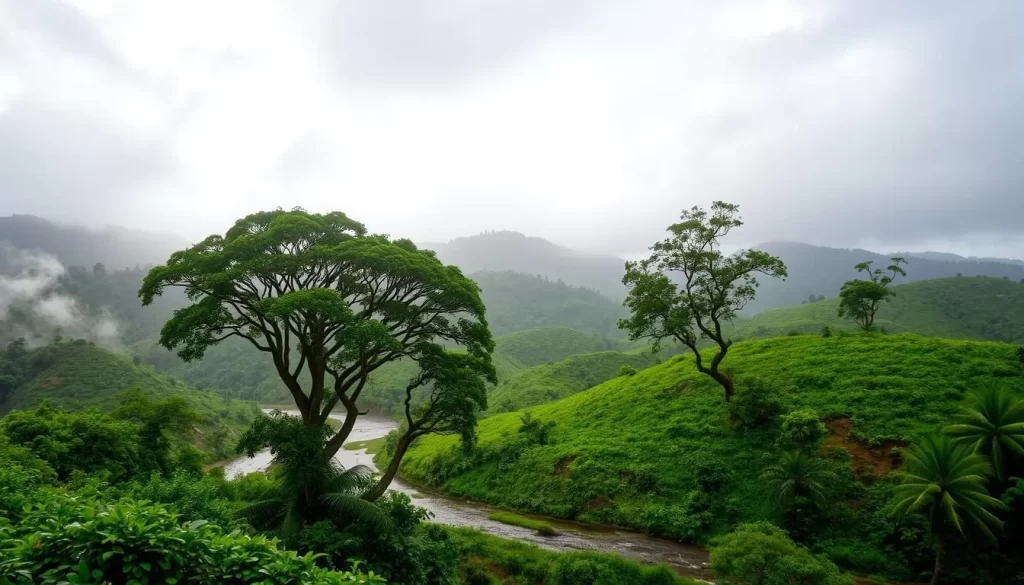
Winter Season: October to February
Winter is considered the best time to visit Uttar Pradesh, with comfortable temperatures ranging from 15-25°C (59-77°F) during the day. The months of October and November, and November and February are particularly pleasant, making it ideal for sightseeing. You can enjoy historical sites, cultural attractions, and outdoor activities without the harsh weather conditions. Key highlights of this season include:
- Pleasant daytime temperatures and cooler evenings, making it perfect for exploring.
- December and January being the coolest months, with occasional morning fog.
- Winter nights can be chilly, especially in the northern districts.
- The overall comfortable climate makes it the peak tourist season.
This season offers the most comfortable conditions for exploring Uttar Pradesh’s numerous historical sites, temples, and cultural attractions, making it the best time for your visit.
Uttar Pradesh, India: Best Months for a Weather-Savvy Trip
Planning a trip to Uttar Pradesh requires understanding the best time to visit for an optimal experience. The state’s diverse climate means that the weather varies significantly throughout the year, impacting the quality of your trip.
October to March: The Ideal Window
The period from October to March is considered the ideal time to visit Uttar Pradesh. During these months, the weather is generally pleasant, making it suitable for sightseeing and outdoor activities. The temperatures are moderate, and the humidity is relatively low, creating a comfortable environment for exploring the state’s rich cultural heritage and natural attractions.
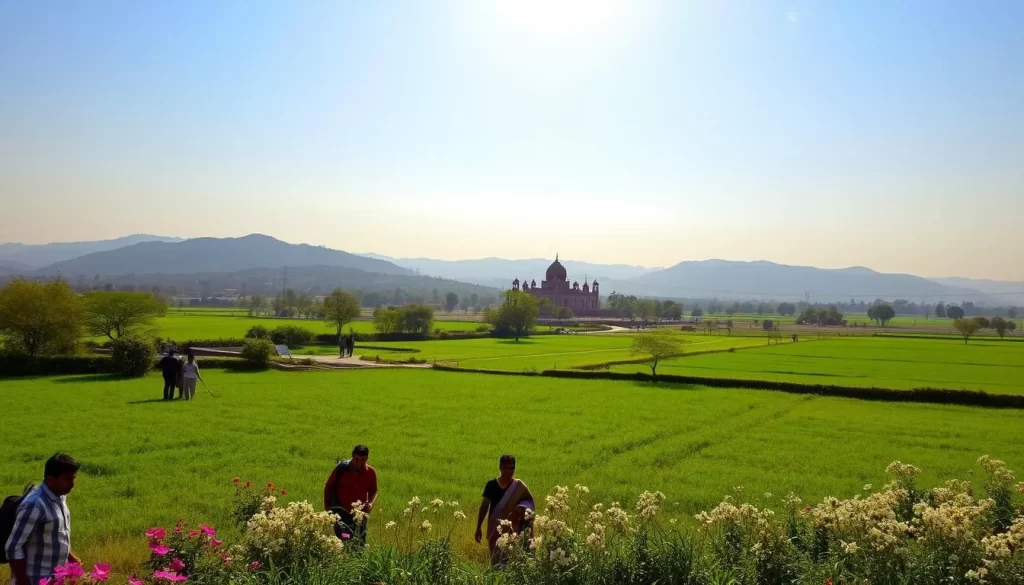
November to February: Peak Tourist Season
The months from November to February are considered the peak tourist season in Uttar Pradesh. The weather is cool and pleasant, with average temperatures ranging from 10°C to 20°C, making it ideal for visiting famous sites like the Taj Mahal. While this period attracts a large number of tourists, it is the best time to enjoy the state’s festivals and cultural events.
| Month | Average Temperature (°C) | Tourist Season |
|---|---|---|
| November | 18-22 | Peak |
| December | 12-18 | Peak |
| January | 10-15 | Peak |
| February | 15-20 | Peak |
Shoulder Seasons: September and March
For travelers looking for a balance between favorable weather and fewer tourists, the shoulder seasons of September and March are worth considering. September marks the end of the monsoon season, with decreasing rainfall and moderating temperatures, while March brings the onset of spring, with warm days that are still pleasant for sightseeing. These periods offer better deals on accommodations and less crowded conditions at major attractions.
During these shoulder months, you can enjoy most of the benefits of the peak season, such as pleasant weather and access to major attractions, with fewer crowds and lower prices. However, it’s essential to be prepared for occasional weather variations.
Month-by-Month Weather Guide for Uttar Pradesh
A month-by-month breakdown of the weather in Uttar Pradesh helps travelers prepare for their journey. Understanding the seasonal variations is key to making the most of your trip.
Winter Months: December to February
The winter months in Uttar Pradesh are characterized by cool temperatures, making it an ideal time to visit. Daytime temperatures are pleasant, ranging from 20-25°C (68-77°F), while nights can be quite chilly, especially in December and January.
You can enjoy sightseeing without the discomfort of extreme heat or humidity during these months. It’s a peak tourist season, so expect larger crowds at popular attractions.
Spring Transition: March to April
As winter gives way to spring, Uttar Pradesh experiences a gradual rise in temperatures. March is generally pleasant, with temperatures between 25-30°C (77-86°F), but by April, the heat starts to become more pronounced.
This period is a good time to visit if you prefer fewer crowds and are comfortable with rising temperatures. The landscape is still lush from the winter, making it a beautiful time for outdoor activities.
Summer Heat: May to June
Summer in Uttar Pradesh is hot, with temperatures often soaring above 40°C (104°F). May and June are the hottest months, with the heat being intense, especially in the afternoons.
If you’re planning to visit during this time, it’s advisable to stay hydrated and avoid outdoor activities during the peak heat hours. The heat can be challenging, but it’s a good time to explore indoor attractions like museums and historical sites.
Monsoon Period: July to September
The southwest monsoon brings significant rain to Uttar Pradesh, starting in July. This period is characterized by high humidity and frequent rains. August is typically the wettest month, with heavy downpours that can cause flooding in some areas.
- The monsoon brings relief from the summer heat but creates muggy conditions with temperatures ranging from 30-35°C (86-95°F).
- The landscape transforms into lush green, making it a beautiful time for nature lovers.
- However, the rain can make travel challenging with occasional flooding and transportation disruptions.
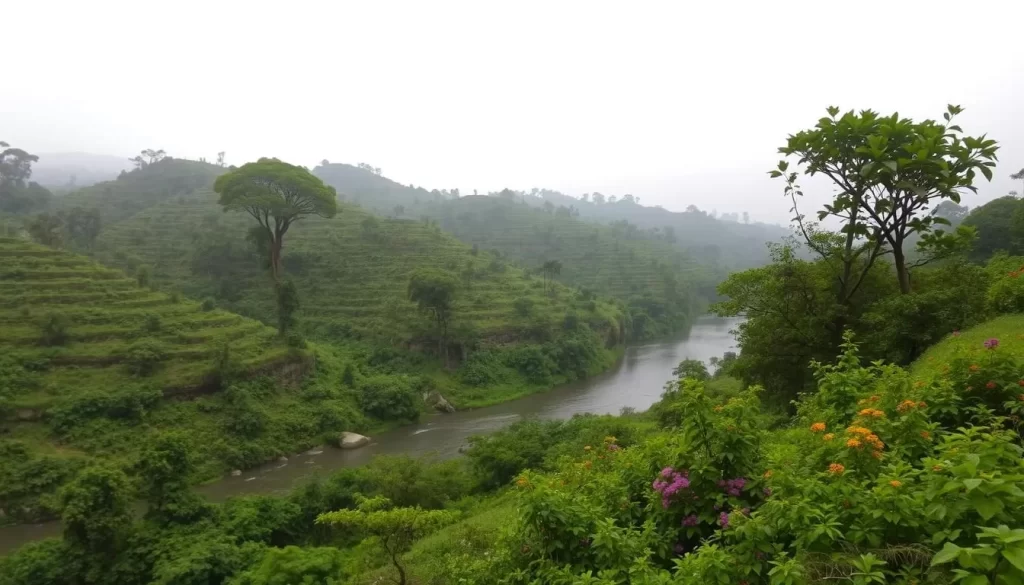
By understanding these monthly weather patterns, you can better plan your trip to Uttar Pradesh, ensuring a more enjoyable and stress-free experience.
Planning Your Visit Around Festivals and Attractions
When planning your trip to Uttar Pradesh, it’s essential to consider the timing of festivals and attractions to make the most of your visit. The state’s rich cultural heritage and diverse attractions offer a unique experience, depending on when you visit.
Major Festivals in Uttar Pradesh and Their Timing
Uttar Pradesh is known for its vibrant festivals, which are an integral part of its cultural identity. Major festivals like Navratri, Diwali, and Holi are celebrated with great fervor. These festivals usually take place between October and March, making this period ideal for experiencing the local culture.
Visiting the Taj Mahal: Weather Considerations
The Taj Mahal, one of India’s most iconic monuments, is a must-visit attraction in Uttar Pradesh. The best time to visit the Taj Mahal is from October to February when the weather is pleasant. Avoid visiting during the peak summer months to escape the heat.
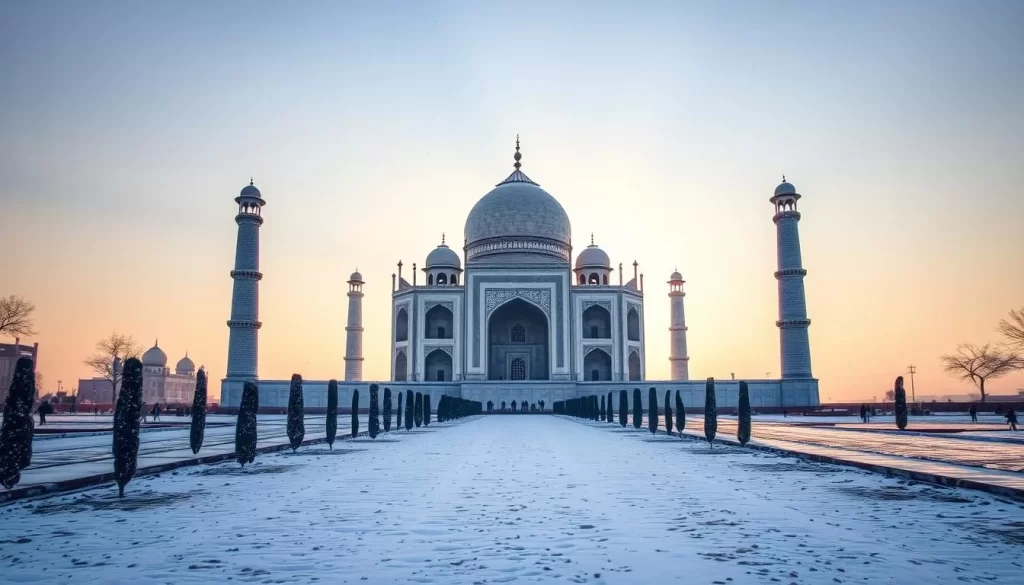
Wildlife Parks and Natural Attractions
Uttar Pradesh is home to several wildlife sanctuaries and national parks, such as the Dudhwa National Park, offering diverse wildlife experiences. The best time to visit these parks is between November and May. For bird watching, visit between November and March when migratory birds arrive at wetlands like the Chambal River Sanctuary.
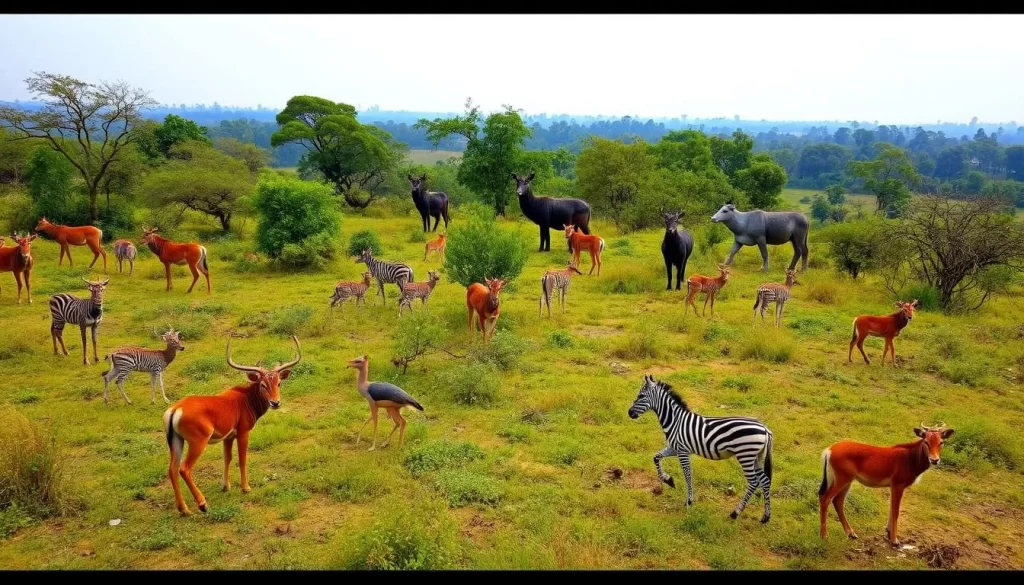
Conclusion: Making the Most of Your Uttar Pradesh Trip
To make the most of your trip to Uttar Pradesh, consider the best time to visit. The ideal months to explore this historically rich state are from October to March, with November to February offering the most favorable weather conditions.
Your travel plans should also account for cultural festivals and the Golden Triangle route, which are best experienced during the winter season. Whatever time you choose, Uttar Pradesh promises a rich cultural experience, making it an essential visit for understanding India’s heritage.
The above is subject to change.
Check back often to TRAVEL.COM for the latest travel tips and deals.
